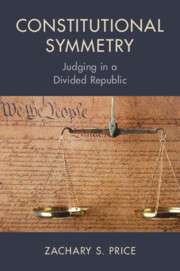
My previous post highlighted areas where symmetry could influence future doctrinal development. This final post on my book delves into three contentious areas of constitutional law: equal protection, fundamental rights, and the law of democracy. By showcasing symmetric possibilities, it becomes evident that framing constitutional debates in highly adversarial terms is a choice, and less polarizing alternatives exist as well.
Regarding equal protection, the ideological divide in the United States is evident in discussions of group identity and legal equality. The conservative perspective emphasizes a “colorblind” approach, focusing on individual characteristics rather than group identities. In contrast, the progressive viewpoint suggests that governmental favoritism towards historically disadvantaged groups may be necessary or mandated by the Equal Protection Clause of the Fourteenth Amendment.
While the gap between these perspectives has widened in American society, the Supreme Court has leaned towards the conservative stance. In the 2023 case of Students for Fair Admissions, Inc. v. President and Fellows of Harvard College (SFFA), the Court ruled that racial preferences in higher education are unconstitutional.
The Court could address this imbalance in several ways. One approach could be to revive what I term “Bakke with bite,” emphasizing individualized diversity in line with precedents like Regents of the University of California v. Bakke and Grutter v. Bollinger but with greater precision. Another option, known as “counter-majoritarian majoritarianism,” would allow majorities to provide preferences to historically disadvantaged minorities if the majority genuinely controls the relevant institution or government level. Finally, “consciousness without classification” would enable governments to establish benefit criteria based on demographic effects rather than individual characteristics, as proposed by Justice Kennedy in Parents Involved in Community Schools v. Seattle School District #1.
While these approaches have their pros and cons, they offer more symmetry compared to rigid colorblindness or exclusive group preferences. Despite the SFFA ruling, these options remain viable avenues for future consideration.
On the topic of fundamental rights, the book defends the rights identification method endorsed by the Supreme Court in Washington v. Glucksberg and applied in the recent Dobbs decision overturning Roe v. Wade. This method involves assessing unenumerated fundamental rights based on their historical roots and relevance to ordered liberty.
The Dobbs decision left room for interpretation regarding the “history and tradition” inquiry, with Justice Kavanaugh emphasizing a forward-looking approach. If implemented as proposed by Justice Kavanaugh, the Glucksberg method would provide a symmetric platform for progressives and conservatives to shape future jurisprudence through political advocacy.
Despite the polarization surrounding Dobbs, a fair application of Glucksberg could support progressive rights in the future, including potentially upholding abortion rights. The protection of parental rights under the Fourteenth Amendment, a traditionally recognized unenumerated right, also reflects symmetry in today’s partisan landscape.
The book delves into democracy’s legal aspects in its final chapter. Applying symmetry in electoral matters poses challenges due to dynamic political divisions influenced by existing rules. While the Court’s decision to leave political gerrymandering to the political sphere may seem appropriate, vigilance against rules that systematically disadvantage one coalition is crucial to maintaining symmetry.
The book provides a more detailed exploration of these themes. By reframing debates in terms of symmetry, it aims to alleviate the current constitutional partisanship deadlock.
In conclusion, the U.S. Constitution, despite its challenges, remains a beacon of stability and democratic continuity. Symmetric interpretation seeks to redirect political conflicts away from constitutional law and towards the political process, preserving the constitutional structure that has served the nation well.
Special thanks to Eugene and the Volokh Conspiracy bloggers for hosting these posts, and to all readers for their engagement!




